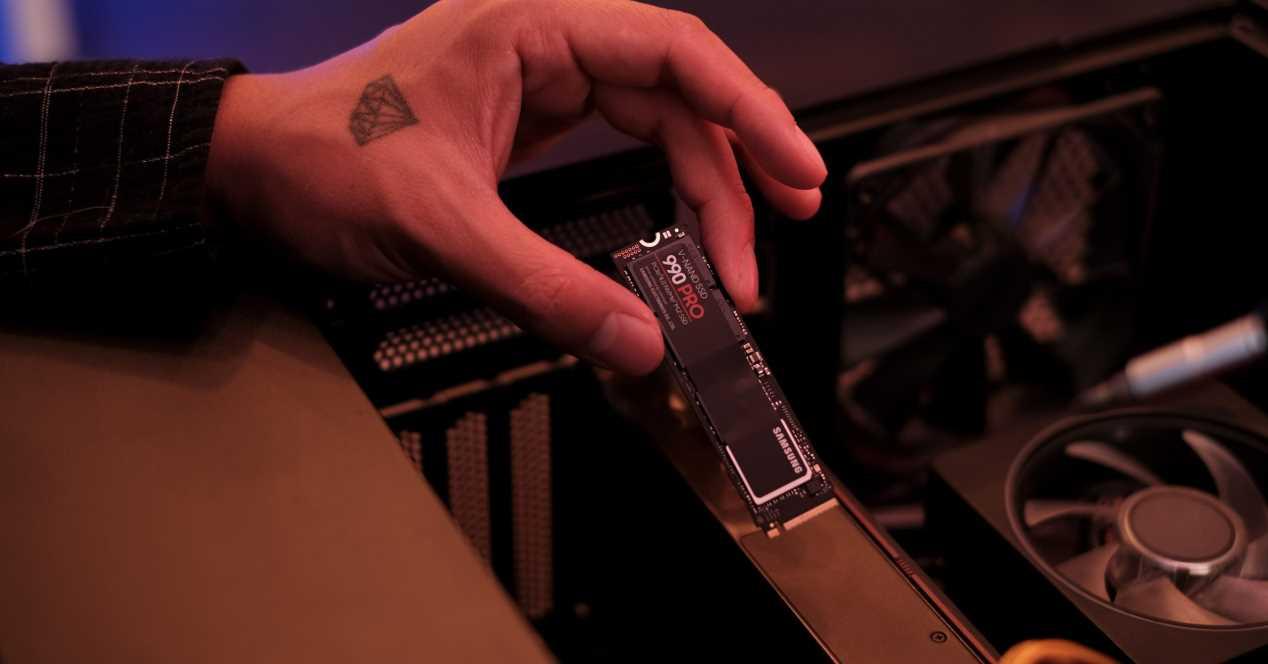In this case we are going to talk about the performance of M.2 SSDs with PCI Express interface for communication, so we will leave aside SATA SSDs which, although
How to Understand SSD Performance
To understand the difference between sequential and random access to an SSD, we are going to make a real-life comparison that everyone should understand. Imagine for a moment that you have two different postmen responsible for delivering the letters.
- We call one of them red and he has his work bag with all the mail he needs to send sorted by streets, so he only has to reach a street and deliver the mail door to door. door and door to door. orderly manner. You can even leave your motorcycle parked temporarily, since you won’t need to return to your vehicle to move it. We will call this way of proceeding sequential access.
- On the other hand, the other postman, who will be called blue, does not have his bag of letters to distribute in order, he must continually move around the neighborhood or neighborhood on his motorcycle. Which will make you deliver less correspondence during your working hours during your working hours. We are therefore dealing with random access, where a good part of the time is spent looking for the new address.
Unfortunately, the vast majority of computer programs have random access to memory, there is not a single fully sequential program. On the other hand, the one in charge of playing postman or rather postman and postman is the central chip of the SSD, which we call the flash controller and it is the one in charge of controlling the correspondence, both sent and received. The factors would be the memory channels.
Why are some SSDs less efficient than others?
With all this, you will have understood that the reason why SSD manufacturers always give the sequential speed as a sample of the performance of their devices is for pure convenience. Since this is the scenario where the best results are given. Now the chip that acts as the flash controller does not differ much from the memory controller built into the CPU to access the RAM, its operation is almost identical, but with the difference that it accesses the flash memory chips in the unit of solid memory. State.
The manufacturers trick is that they tell you the speed at which data is transferred from SSD to RAM via the PCI Express bus, but they don’t tell you the speed at which the flash controller accesses the drive’s internal memory. . Well, if you take for example one that uses a PCIe Gen 4 interface, you’ll see that it hits 8GB/s at its max point, however, we have some units that run at 7GB/s, others at 6.6 GB/s, others at 5.5 GB/s. The theoretical maximum is not reached because it depends on the performance of the SSD controller chip and the type of memory used.
Also, because the CPU cache is preloaded with the next memory addresses the system will access, it can tell the flash controller to look for data on the SSD in advance. This is where the RAM in the drive is important, as it allows the flash controller to sort information in advance and present it as quickly as possible. Therefore, units without RAM, although cheaper, perform much worse.
Memory channels also play a role
Going back to the postman analogy, and like RAM, having multiple channels of memory means being able to access and retrieve more data simultaneously. The problem is that with the rise of M.2 drives, with fewer storage chips, we’re finding that high-performance drives support less and less simultaneous send and receive. On the other hand, although we see chips in a single package, one of the most common tricks is to make each flash memory chip appear to be actually several different chips.
What do we mean by that? We can have a chip with 1 TB of information which is divided into 4 blocks of 256 GB each in an SSD and, on the other hand, in another we have the same capacity but in 8 blocks of 128 GB. they have the same capacity, but the second will be more efficient since there will not be as much contention in access to information. Thus, the choice of flash controller and the choice of memory chips influence the performance of the SSD.
Obviously these are performance influencing factors and manufacturers have agreed to hide this when promoting their units. Therefore, the specifications and appearance are similar, but their performance differs from model to model.









